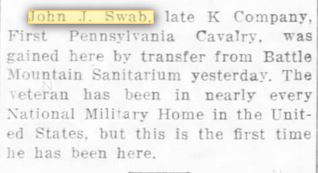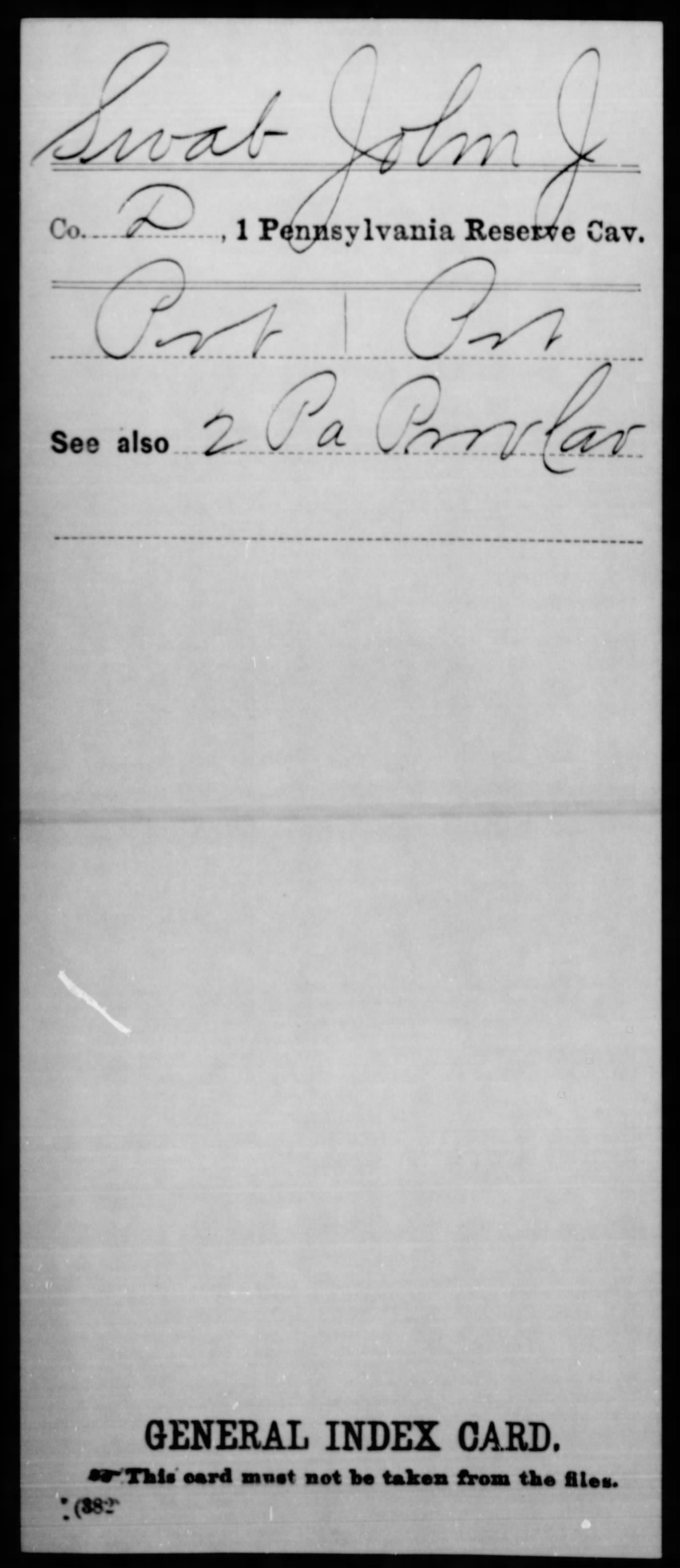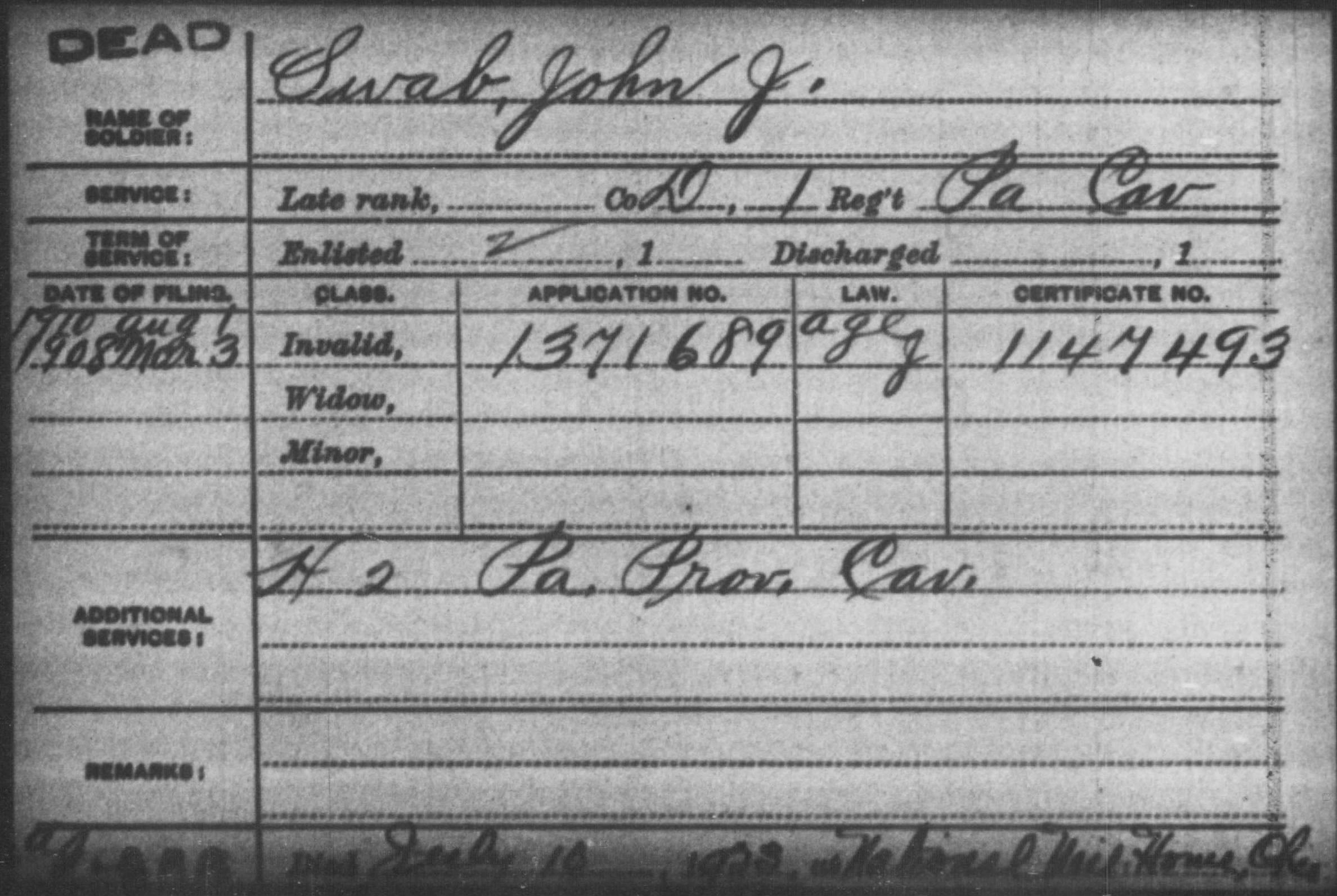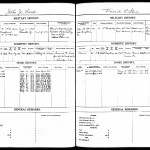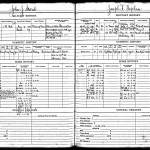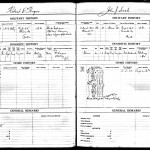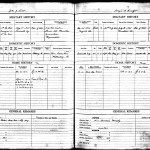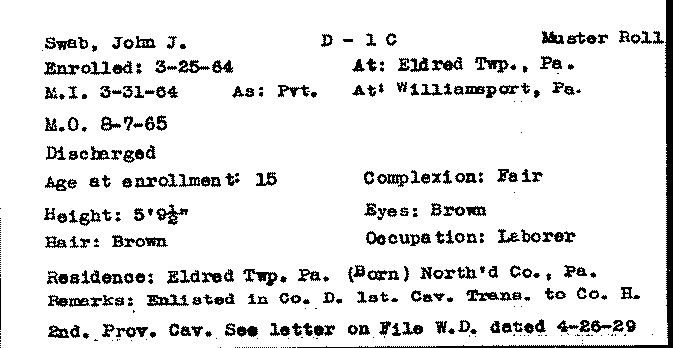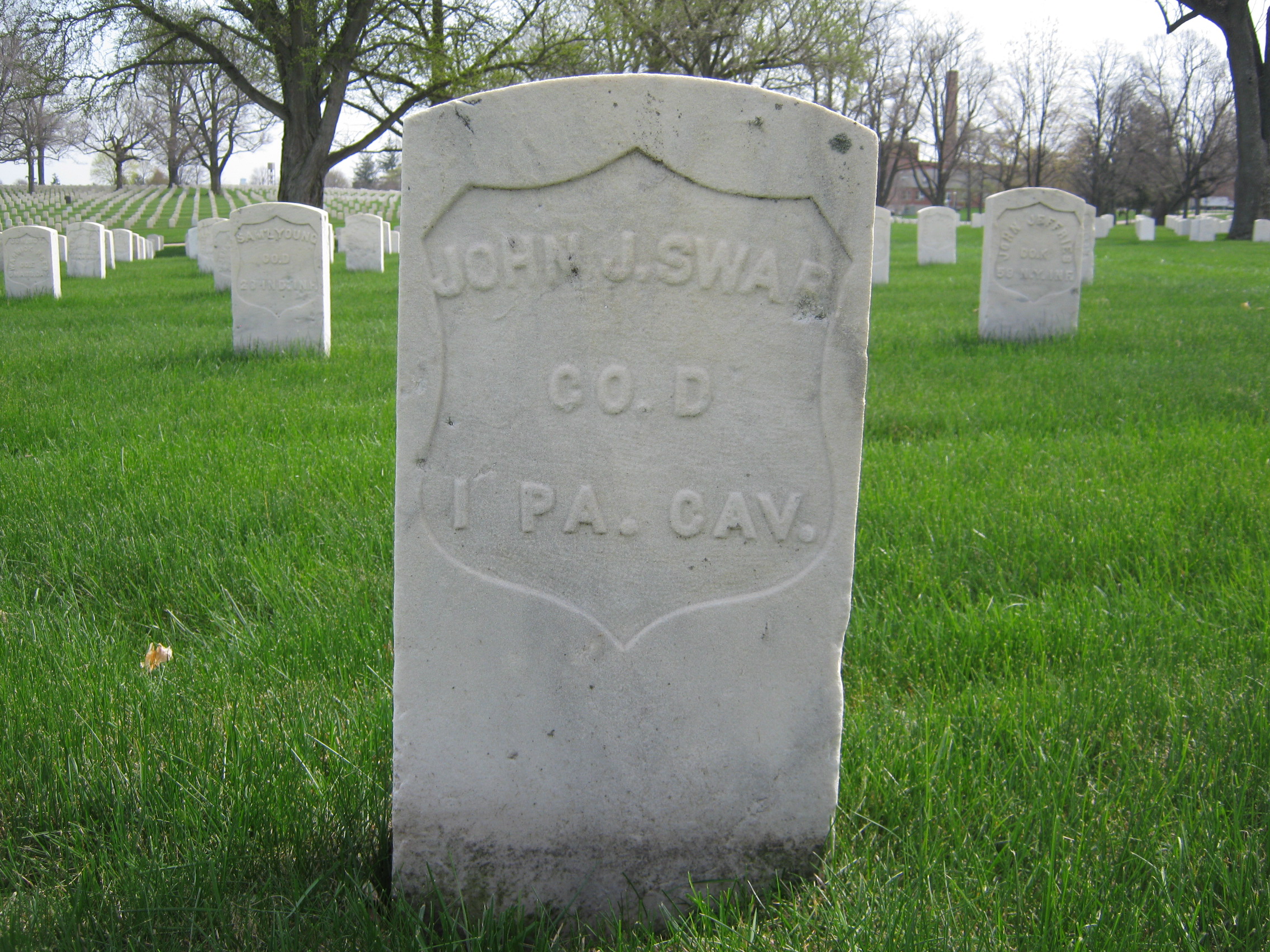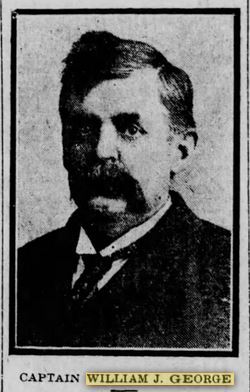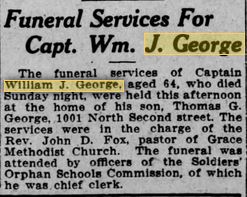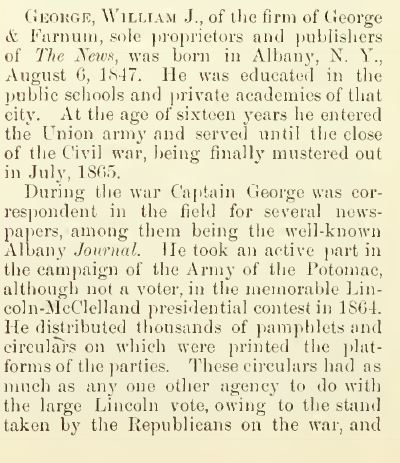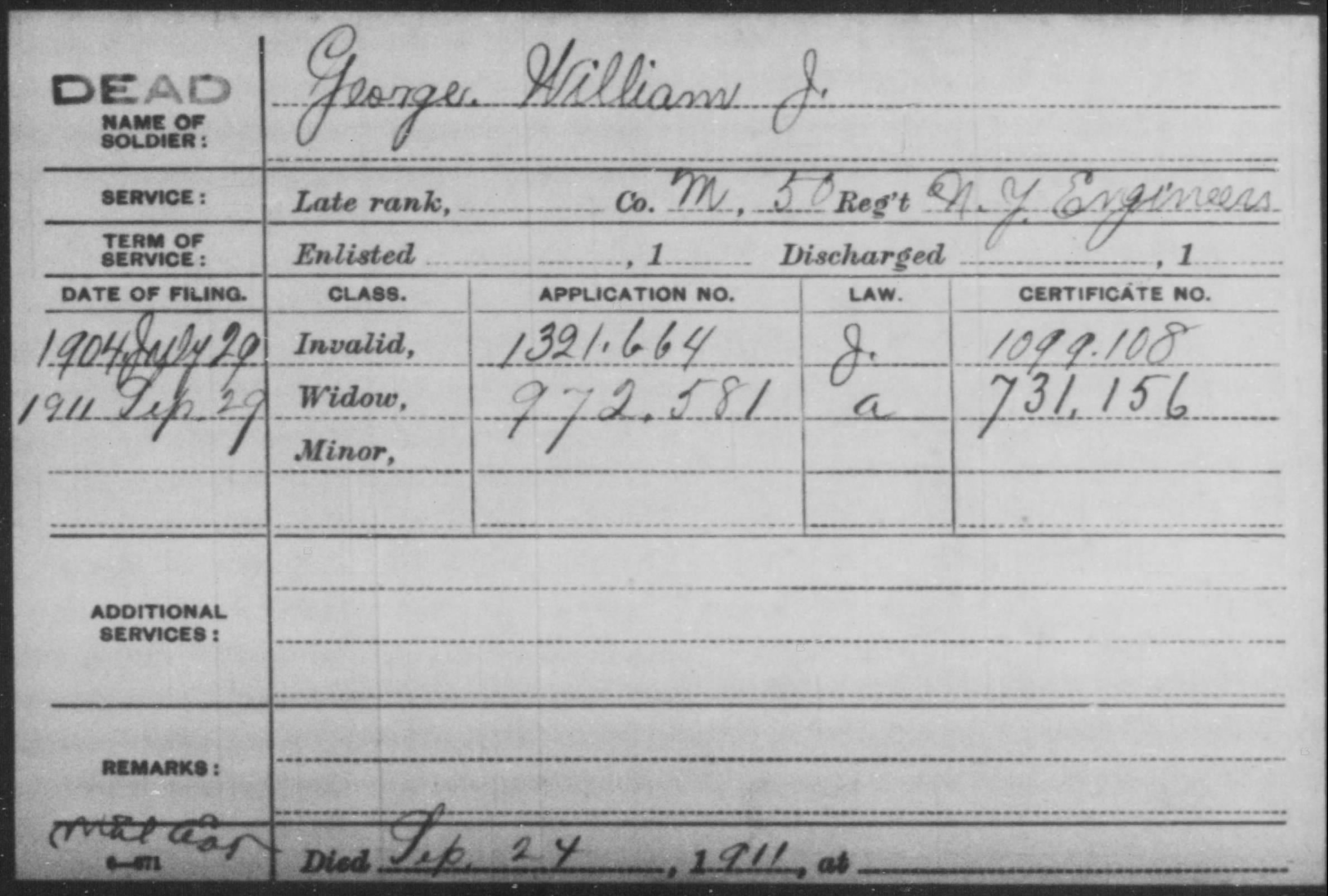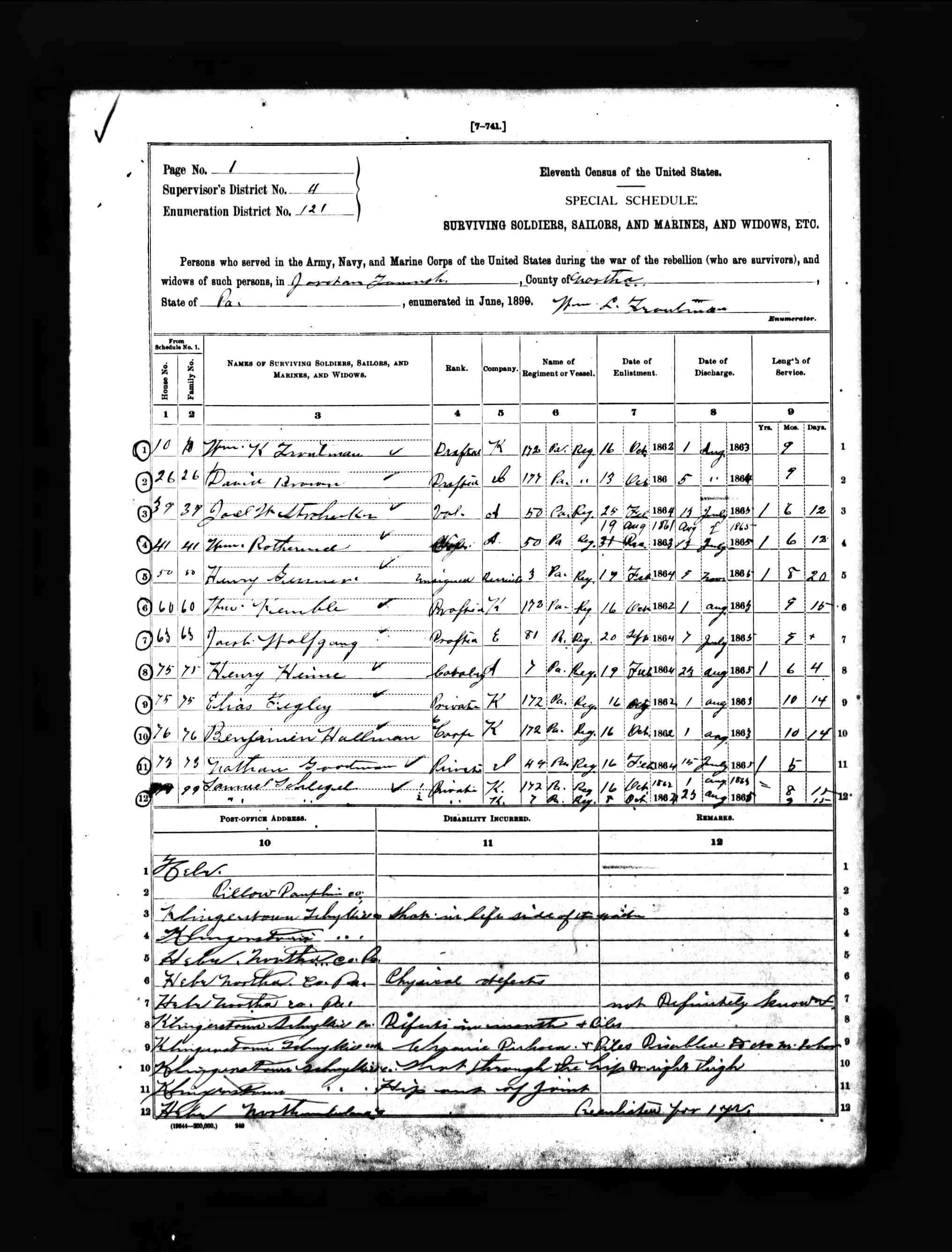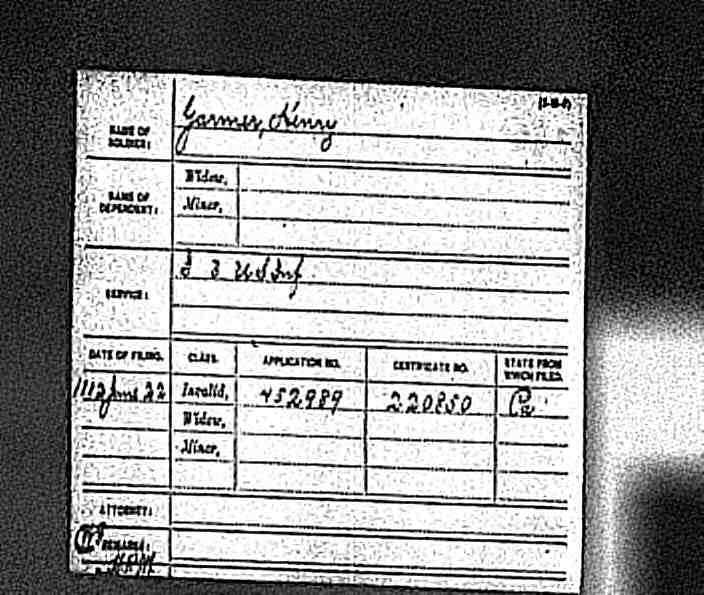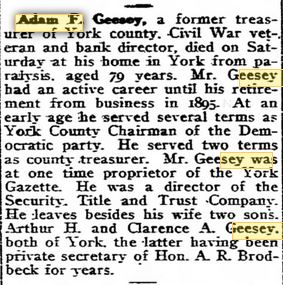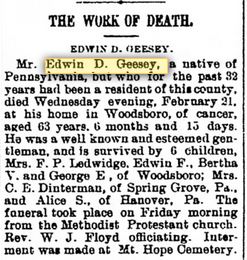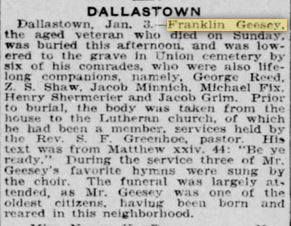John J. Swab – A Record for the Soldier Homes?
Posted By Norman Gasbarro on January 22, 2016
On the 9 March 1919, the Leavenworth Post of Leavenworth, Kansas, reported on a new admission to the National Soldiers’ Home there – that of John J. Swab, indicating that he was transferred from Battle Mountain Sanitarium and stating that he had been in “nearly every other National Military Home in the United States, but this is the first time he has been here.”
A question has now come up as to whether this is the same John Swab who was born about 1848, the son of Daniel F. Swab (1813-1871) and Sally [Heller] Swab (1817-1901). John appears in the 1850 Census for Washington Township, Dauphin County (2 years old), and in the 1860 Census (12 years old) of the same place – living with his family.
Also, if the John J. Swab who was an inmate in the soldier homes was a member of the Swab family of Elizabethville and Washington Township, Dauphin County, then he needs to be added to the list of Elizabethville area Civil War veterans that is being compiled for the Elizabethville Bicentennial which will take place in 2017.
A summary military record for the John J. Swab who arrived at the Leavenworth Home in 1919, can be found in the home records, in the Military Index Card available on Fold3, and on the Pension Index Card also from Fold3. First, the latter two records are presented below:
Summarizing the information in the two cards, John J. Swab served in the 1st Pennsylvania Cavalry, Company D, and the 2nd Pennsylvania Provisional Cavalry, Company H. The Pension Index Card also gives the date of death as 10 July 1923, and the place of death as National Military Home, Ohio.
The dates of service are not found on the above two records, but can be found in the National Soldier Home records, six pages of which pictured below. In those home records, available through Ancestry.com, two pages of a ledger book are pictured, but only one page contains John J. Swab‘s records. Click on any thumbnail to enlarge.
In addition to the military information which confirms the service of John J. Swab in the aforementioned cavalry regiments, the home record sheets give the veteran’s age, his physical description, ailments, next of kin, residence and occupation prior to admission and a history of known transfers from one home to another. Rather than writing out the full name of the home, the branch name was given in initials.
On several of the home sheets, Miss Carrie Dockey (later as Mrs. Carrie Bair) is given as next of kin (a niece) living in Millersburg. This niece connects John J. Swab, to the Lykens Valley area – but it is not known at this time how Carrie Dockey is his niece. A brother, Samuel D. Swab is also named in the home records. The brother’s address appears as Oklahoma and as California. It is also not known at this time how Samuel D. Swab is connected to John J. Swab. If John J. Swab was the son of Daniel Swab and Sally [Heller] Swab, there was no sibling named Samuel who has been found, nor is there a descendant of a sibling of Daniel and Sally named Carrie Dockey who has been located who could qualify as a niece. Help is therefore requested from blog readers in determining the exact genealogical relationship of John J. Swab to these two individuals – Carrie Dockie and Samuel D. Swab.
Another curious fact found in the home records is that this John J. Swab lived in Pittsburgh prior to his admission to the soldiers’ home system – and that he was a widower. This would indicate a marriage and a spousal death prior to his first home admission – and a re-location to Pittsburgh. No record has yet been located of the marriage or the name of a possible wife.
More clues as to whether John J. Swab is an Elizabethville area veterans can be found on the Pennsylvania Veterans’ File Card, shown above from the Pennsylvania Archives. His enrollment on 25 March 1864, at Eldred Township, Schuylkill County, where he was a resident, places him in proximity to Elizabethville – and certainly within the geographical area of the Civil War Research Project – but not exactly in the area covered by the Elizabethville Bicentennial. His age at enrollment, 15 years, is approximately correct for the John Swab who was the son of Daniel Swab and Sally [Heller] Swab.
Much still needs to be discovered about this John J. Swab and more evidence needs to be located before he is definitely placed in the Elizabethville Bicentennial list. However, his confirmed residence in Eldred Township definitely allows him to be added to the Civil War Research Project.
A pension application was first made in March of 1908. Most of the answers to the above questions will most likely be found in that application file which is available from the National Archives in Washington, D.C. However, the cost of obtaining those application files is too prohibitive for this Project, and, as in the past, the Project has to rely on the generosity of those who have already obtained the records to share them. Therefore, the plea goes out to anyone who has obtained the pension file – please share it with readers here!
Another question that needs to be resolved about this John J. Swab is why so many transfers? Typically, a veteran moved about from one home to another only a few time, but John J. Swab transferred more times than any other inmate thus far encountered by this Project. Was he an unmanageable person who was transferred because of some unwillingness or inability to conform to home rules? Or, was he just trying to see the country at the expense of the government? From the prior research done on these soldiers’ homes, a veteran voluntarily went in and could leave (go to another facility or go home) at any time on his own say so – or, as in the case where the home could no longer manage a individual, the home management could transfer the individual.
There could be an interesting story here for anyone willing to research it further.
John J. Swab is buried at Dayton National Cemetery, Dayton, Montgomery County, Ohio. His Findagrave Memorial gives little additional information about him.
—————————-
The new clipping is from Newspaper.com.
 ;
;
